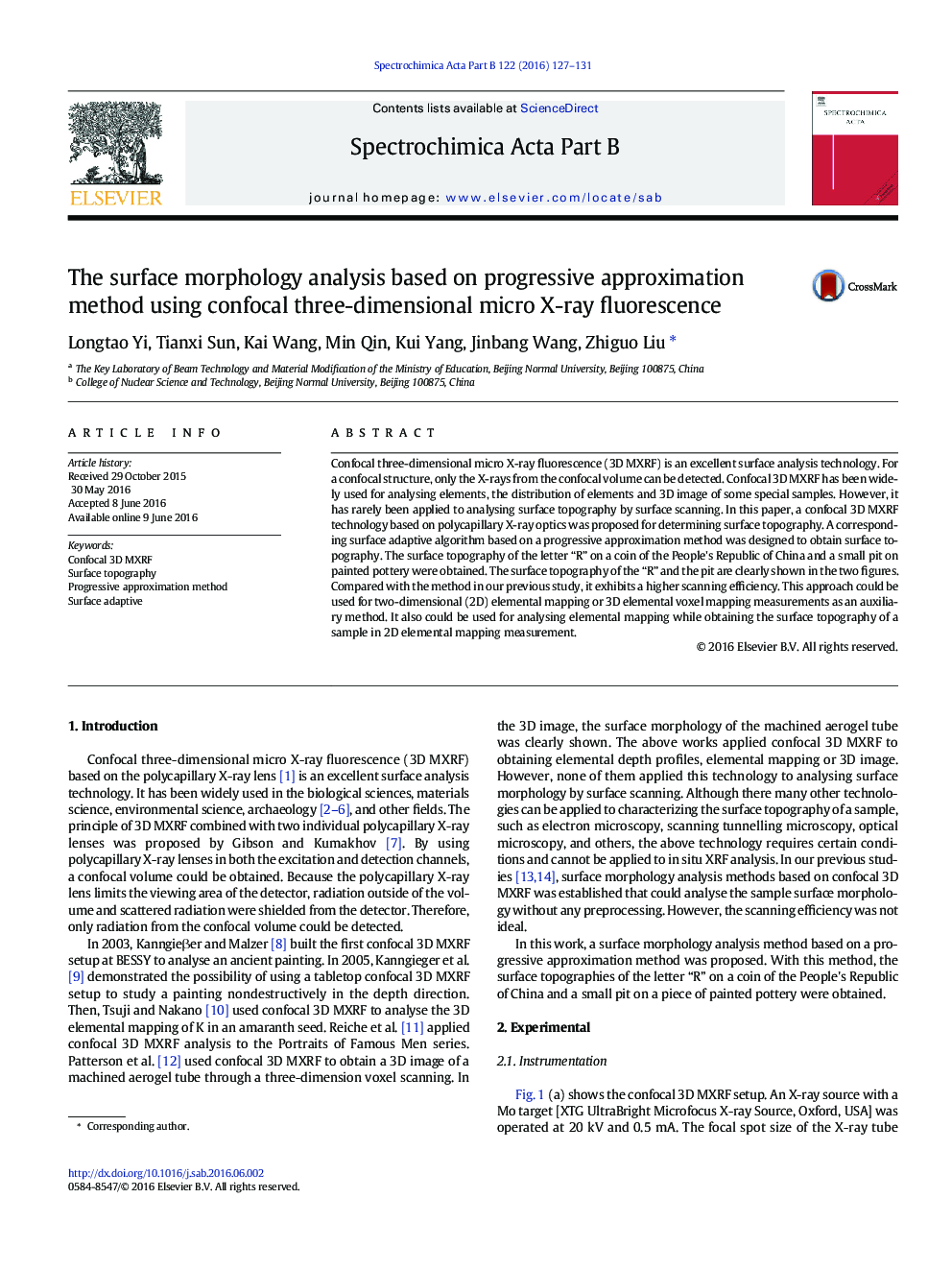| Article ID | Journal | Published Year | Pages | File Type |
|---|---|---|---|---|
| 1239561 | Spectrochimica Acta Part B: Atomic Spectroscopy | 2016 | 5 Pages |
•We introduced a new scanning method to obtain the surface topography by 3D MXRF.•The progressive approximation method was firstly applied to this analysis.•Compared with our previous methods, the method in this paper was more time-efficient.
Confocal three-dimensional micro X-ray fluorescence (3D MXRF) is an excellent surface analysis technology. For a confocal structure, only the X-rays from the confocal volume can be detected. Confocal 3D MXRF has been widely used for analysing elements, the distribution of elements and 3D image of some special samples. However, it has rarely been applied to analysing surface topography by surface scanning. In this paper, a confocal 3D MXRF technology based on polycapillary X-ray optics was proposed for determining surface topography. A corresponding surface adaptive algorithm based on a progressive approximation method was designed to obtain surface topography. The surface topography of the letter “R” on a coin of the People's Republic of China and a small pit on painted pottery were obtained. The surface topography of the “R” and the pit are clearly shown in the two figures. Compared with the method in our previous study, it exhibits a higher scanning efficiency. This approach could be used for two-dimensional (2D) elemental mapping or 3D elemental voxel mapping measurements as an auxiliary method. It also could be used for analysing elemental mapping while obtaining the surface topography of a sample in 2D elemental mapping measurement.
